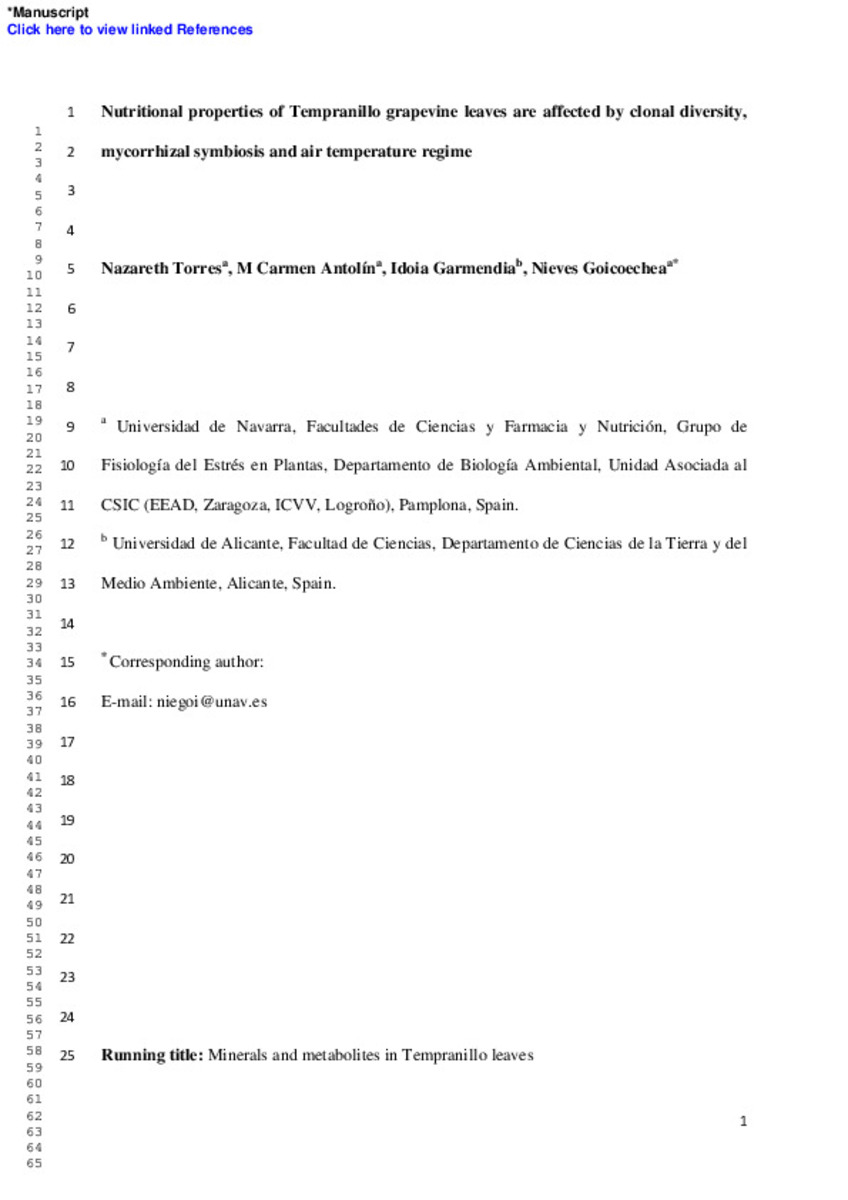Nutritional properties of Tempranillo grapevine leaves are affected by clonal diversity, mycorrhizal symbiosis and air temperature regime
Palabras clave :
Arbuscular mycorrhizal fungi
Global warming
Minerals
Phenolic compounds
Pigments
Vitis vinifera cv. Tempranillo
Fecha de publicación :
sep-2018
Cita:
Torres N, Antolín MC, Garmendia I, Goicoechea N. Nutritional properties of Tempranillo grapevine leaves are affected by clonal diversity, mycorrhizal symbiosis and air temperature regime. Plant Physiol Biochem. 2018 Sep;130:542-554.
Aparece en las colecciones:
Estadísticas e impacto
0 citas en

0 citas en

Los ítems de Dadun están protegidos por copyright, con todos los derechos reservados, a menos que se indique lo contrario.











